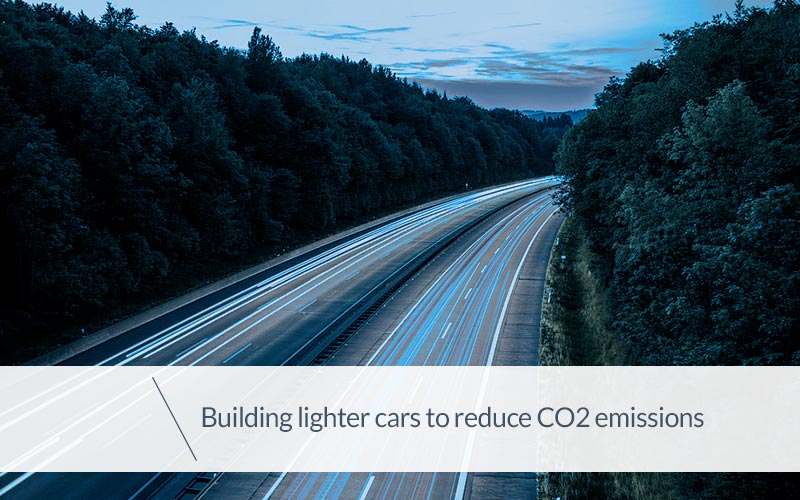
The automobile industry since forever has been forced to coexist with the collateral effects of manufacturing vehicles and then putting them into circulation; in particular atmospheric pollution and CO2 emissions.
Over recent decades giant strides forward have been made, above all regards technology, to construct better-performing cars which are also less polluting, but it’s just not enough.
The excessive number of cars on our roads inevitably generates CO2 emissions higher than the permissible levels. Laws and European community goals place the onus on the producers who need to find new solutions to this old problem.
The EU has fixed goals to reduce current emission per vehicle by 140g CO2/km to 95g CO2/km by 2020.
Electric car production is helping to push in this direction, but it only represents a fraction of the total number of vehicles in circulation across the globe.
So, we need to find some alternative solutions.
Using light metals
One new approach, with a view to reducing emission, is to exploit the advantages of light metals to build cars. For example by substituting steel with lighter alloys.
The overall goal is therefore undoubtedly to reduce the weight of the vehicles in order to reduce energy waste, and as a knock-on effect, to lower CO2 emissions.
In this case, the challenge isn’t just about the selection of alternative alloys over traditional ones, but also to ensure that the vehicle characteristics, with a particular focus on safety, are in no way compromised.
The process of “lightening” cars
Reducing the weight of cars mostly depends on 5 factors:
- powertrain mechanism;
- chassis;
- suspension;
- steering mechanism;
- the interiors.
For many years now ultra-light plastics have been used both for interiors and for bumpers.
The weight of the chassis has a direct effect on emissions, and so large focus needs to be on making it lighter.
Which metals should be used in the automotive industry?
In Reportbuyer’s article “Future of Lightweight Metals in the Automotive Sector”, a comparative analysis between different lightweight alloys is conducted, for the following alloys:
- aluminium;
- magnesium;
- beryllium;
- titanium;
- high strength steel.
The last on the list, for example, is already widely used in the automotive industry, as it is 20% lighter than “traditional” steel.
So we can speculate on using these alloys, in an initial instance, in automotive design, working on finding possible uses and resourceful applications in place of traditional metals.
According to some forecasts, the use of light materials will permit CO2 emissions to come down by roughly 0.08g CO2/kg.
The role of carbon fibre; pros and cons
In addition to the materials listed in the report, we must add carbon fibre which, according to many who work in the sector, represents the most realistic solution for the future, given that its weight is approximately 50% less than steel.
EU legislation aims for 85% of the vehicle being recyclable, and this would make carbon fibre an ideal substitute in vehicle production.
However, where there is a pro, there is also a con, and carbon fibre is certainly no exception.
Maintenance and repairs of parts in carbon fibre are difficult, as often it is practically impossible to see the damage. It can only be detected by acoustic images, ultrasound or x-rays.
Also, carbon fibre is about five or six times more expensive than steel, even though markets predict a considerable fall in price in the near future, which in turn should mean that it is increasingly used in vehicles.
For industry players, it is a complex and urgent challenge, and current trends appear to signify a major transformation in the near future, in order to respect EU standards.



